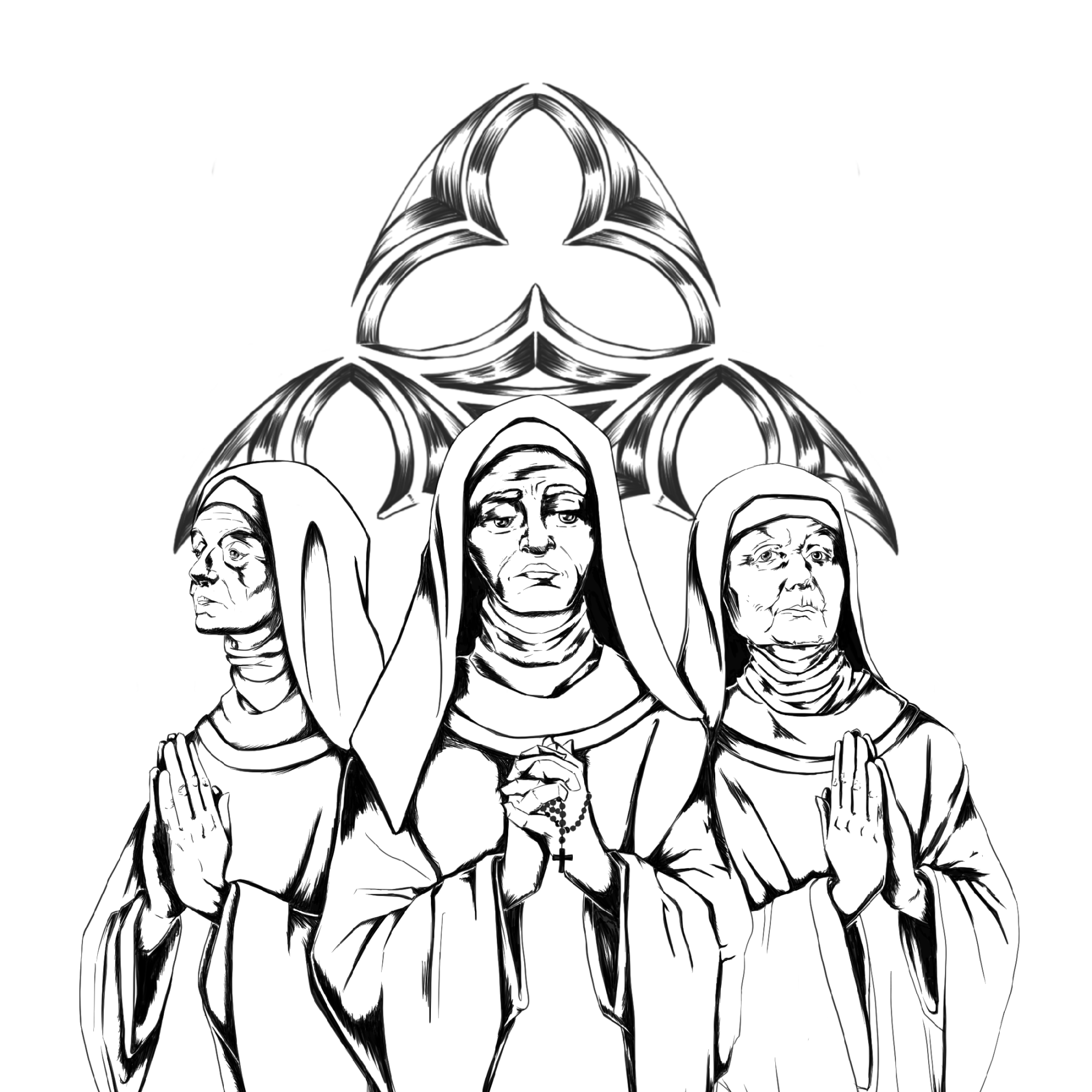af Kathrine Abel & Sebastian Nemeth
Søster Agnes ligger for døden. På sengekanten sidder Benedicte og Maria, hendes to nærmeste søstre. Fra dødslejet mindes de et langt klosterliv, med nære fællesskaber, ensomhed og en slidsom hverdag.
Foromtale
Spillere: 3
Spilledere: 1
Samlet tidsforbrug: 5 timer
Sprog: Dansk/Engelsk
Aldersgrænse: 15+
Læsemængde: 1 side
Fortællingen handler om tre nonners liv, i et katolsk kloster i en uspecificeret tidsperiode før sidste århundredeskifte. Spillerne følger Agnes, Benedicte og Maria i deres liv på klosteret, og er samtidig medskabende af både fortællingen og stemningen. Scenariet handler om at finde fællesskab i en verden, der ikke er særlig imødekommende. Det fastlagte introduceres i starten af scenariet og kredser om Agnes. Det er en ukompliceret dødsfortælling, for Agnes er blevet gammel. Fra dødssengen, spiller man minder fra deres liv som klostersøstre, deres nære fællesskaber midt i ensomheden og den ubarmhjertigt slidsomme hverdag i klostret.
Genren er hverdagsdrama med beskrivelser af de tre nonner, deres fysiske rammer og deres indre liv. Guds Glemte Døtre er et fortællescenarie hvor der i alle scenariets scener, er et fokus på det fysiske og det kropslige i forhold til dagligdagen; både beskrivelser og scener vil bære præg af dette.
karaktererne skabes i løbet af scenariet, ved billeder.
- Hverdagsdrama
- Kvindelighed
- Ukompliceret dødsfortælling
Spillertype:
Guds Glemte Døtre er for dig som elsker at dykke ned i fortællingen, og som ynder at dvæle ved det hverdagslige fysiske rum. Det er for dig som higer efter en nærværende, menneskelig historie, som ikke er bange for at tale om kvindelighed, kvindelige kroppe og at undersøge livet i et kloster sammen.
Spilledertype:
Du har lyst til at eksplicitere det indre, at beskrive det ydre, samt at balancere scenariets følelsesstemninger. Du skal elske at sætte scener, samt at læne dig tilbage, når spillerne tager styringen. Der er ingen biroller at spille, til gengæld får du din helt egen jeg-fortæller-mekanik.

Content notes
Død, religion, fødsel, barselsdød, menstruation, sygdom, kvindeundertrykkelse



